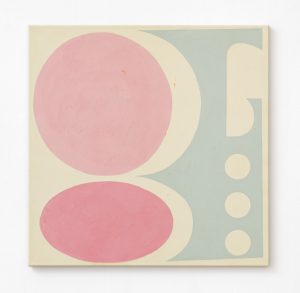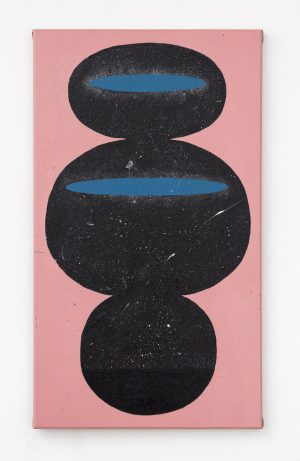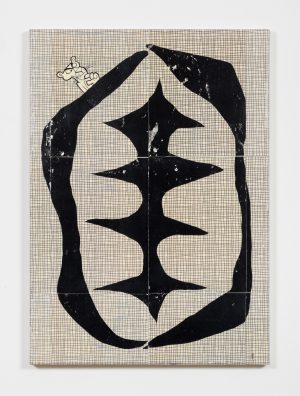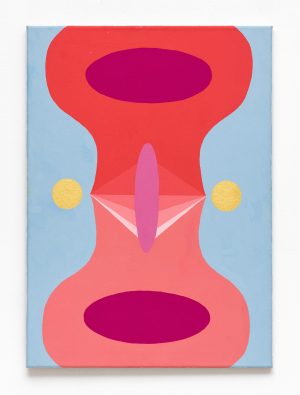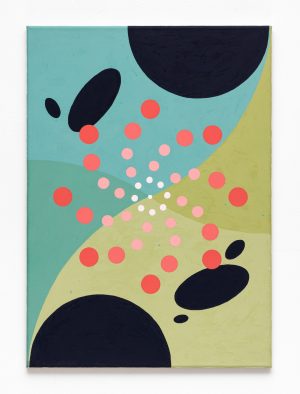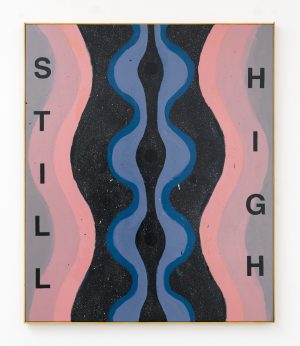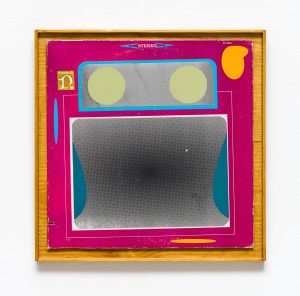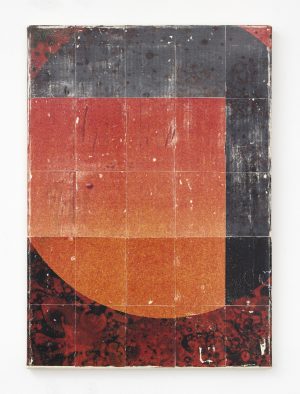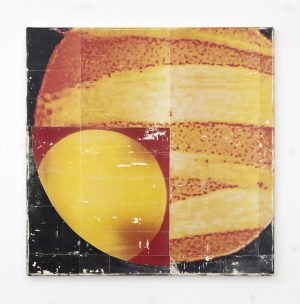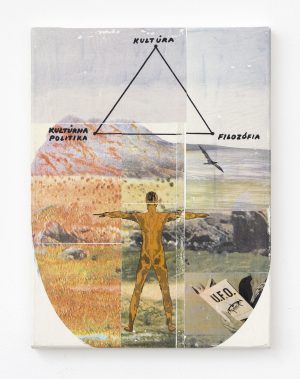
Márk FRIDVALSZKI
Ad Futuro III
- Year(s)
- 2021
- Technique
- silkscreen print, acrylic, canvas
- Size
- 60x60 cm
Artist's introduction
Márk Fridvalszki, who has been living and working in Berlin for more than ten years, started his studies at the University of Applied Arts in Vienna in 2004, graduated from the Academy of Fine Arts in Vienna in 2011 and later attended the Intermedia Department in Leipzig as a postgraduate student. His works from the mid-2010s, which the artist called "stark geometry", expressed a dark paranoia of the "techno-end" dominated by his interest in monochromatism, entropy and technology. He is a co-founder of the art collective and publishing project called Technologie und das Unheimliche (T+U) operating since 2014. His works can be found in the collections of the Ferenczy Museum, the Hungarian National Gallery and the Neuer Berliner Kunstverein. In 2018, a decisive shift occurred in his art: Márk Fridvalszki attempted to break away with a "forward and upward" momentum from the framework of a neoliberal system without a future or criticism. His inspirational creative method builds up from the pastel and/or neon, cultural turning points and subcultural products of late popular modernism characterising Fischer, that pulsates in psychedelic colours and is collage-like in its inspiration – in his work titled Still Hight, he evokes Ilona Keserü's iconic, cosmic world of forms and the skin colour that became the trademark of his predecessor, emphasising the counterpoint of the image. According to Barnabás Zemlényi-Kovács, it is “»archeo-futurology«, a consistent exploration of the sonic and visual remnants of lost futures, modernist visions in a post-future, timeless age.” The works included in the collection are already all artifacts of a utopian “vision of the future”, seen in a universal and ontological perspective, excavations of nostalgia for the future, which, according to the artist, are intended to act as a catalyst to awaken avant-garde energies from their slumber. Annamária Szabó
More artworks in the artist's collection »

